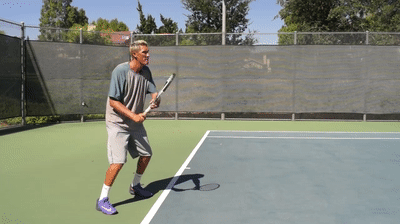Terms In Tennis Game
- Table Tennis Tutorial

- Table Tennis Useful Resources

Tennis is a sport where “love” means zero, and the scoring system is different for games, sets and matches. We get it: that's confusing. Thanks to the USTA Officiating department, it doesn't have to be. This handy guide will teach you the basics of scoring, and playing the sport for a lifetime, with helpful tips and buzzwords that you may want to know before you take to the court. Tennis Glossary: Tennis Terms and Definitions. Originally known as lawn tennis, tennis is a game in which two players (in singles) or two pairs (in doubles) use rackets to strike a felt-covered rubber ball over a net so that it bounces in the opponent’s half of the court. Tennis matches work in three phases: A game, a set and a match. A game is played until a player scores four points, of which a player can earn in a number of different ways (more on that below).

Terms In Tennis Game Crossword

- Selected Reading
Many terms are used in a table tennis game to describe points, fouls, etc. A list of some of the frequently used terms is given below.
Terms In Tennis
Heavy − Used to describe a strong spin.
Blade − Wooden part of the racquet.
Anti-spin − A defense spin used to confuse the opponent or even as a reaction to one strong spin. Top-level players rarely use this technique, but it is very famous among amateurs. Player uses the pimpled side of rubber of racquet.
Inverted rubber − Smooth side of rubber which is used to play and the pimpled side is glued to bat. The smooth side gives more spin as there is a larger contact area.
Pimples (Pips) − Rubber side of the racquet that gives different spin effects unlike inverted rubber. There is no much contact surface on this side of the racquet.
Crossover − Change of stroke from forehand to backhand. A player needs to change his/her stroke as this is often an easy target for attack. It is not easy to return a service in this area.
Tight − A strong return which is difficult for the opponent to handle. It is usually a combination of spin and strong stroke.
Loose − A weak return that has insufficient spin or stroke or both, and is easy for the opponent to play.
Early − This is to refer raising of ball.
Late − The fall of ball’s bounce.
Loop − A strong stroke that usually overpowers the spin of the incoming ball.
Multi-ball − A ball robot or another player continuously feeds another player in training. This method is used to reduce time waste.
Penhold − This is a style used to hold the paddle. This resembles t-holding a pen.
Shakehand − Holding the paddle with index finger perpendicular to handle. This is the most common way of holding the racquet and it resembles holding of racquet in tennis.
Sandwich rubber − This is to describe inverted rubber with sponge.
Speed glue − As the name, it is a glue with high volatile solvents, used to glue sponge of rubber to the blade (the wooden part of racquet). It increases the speed of stroke.
Third ball − This is a stroke that’s hit by server in response to the opponent’s stroke after serve. This is the first attacking stroke in table tennis rally.